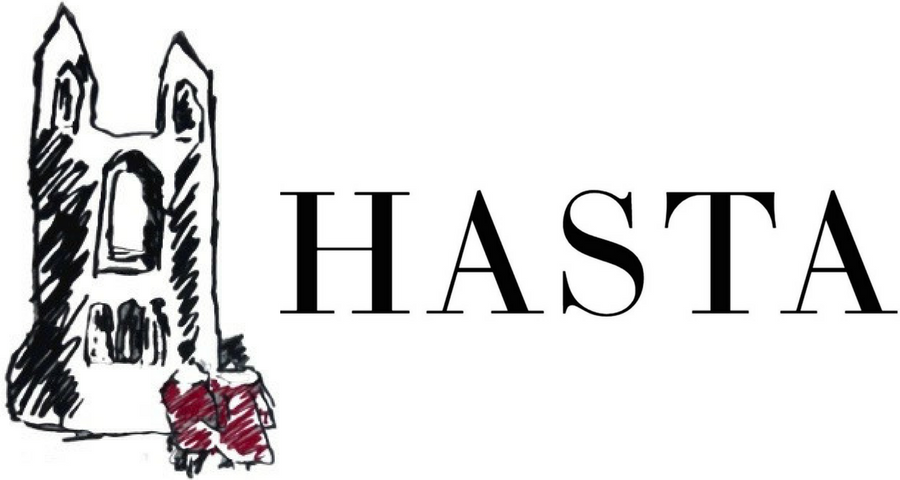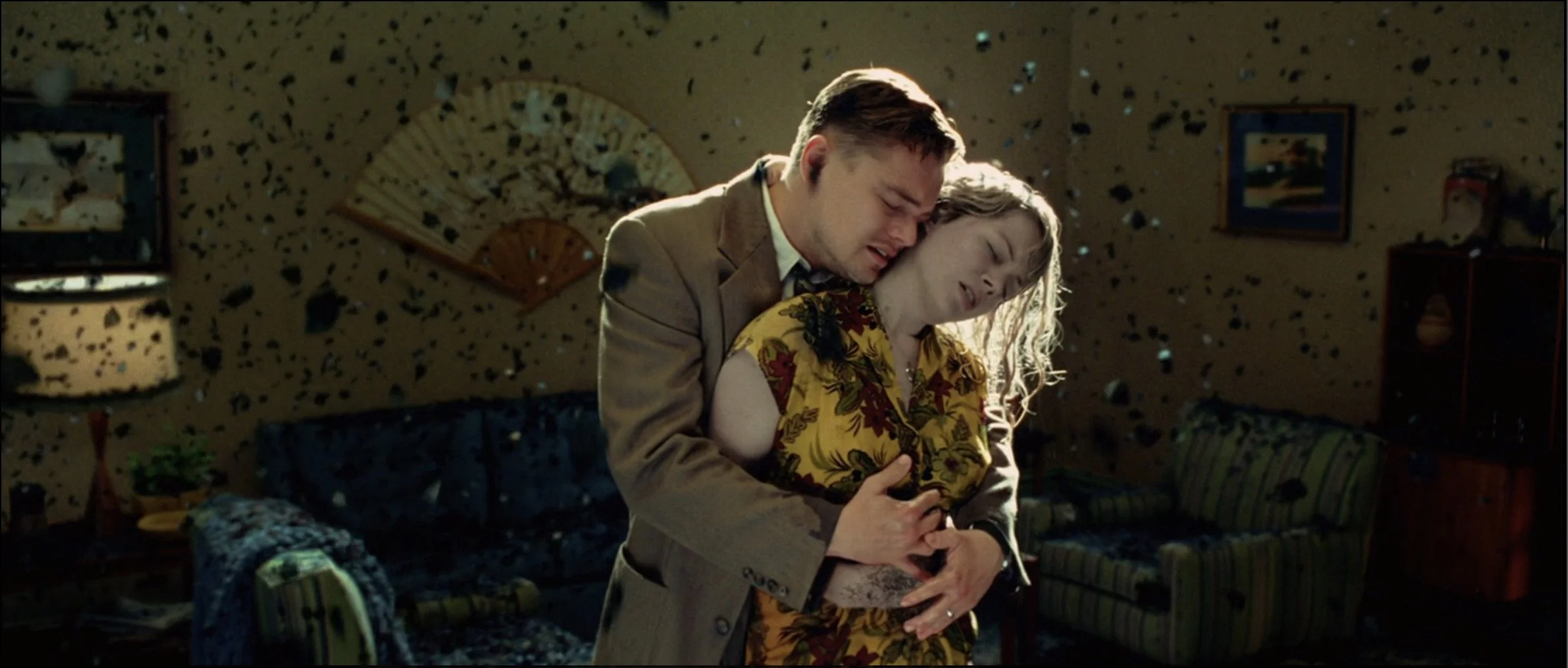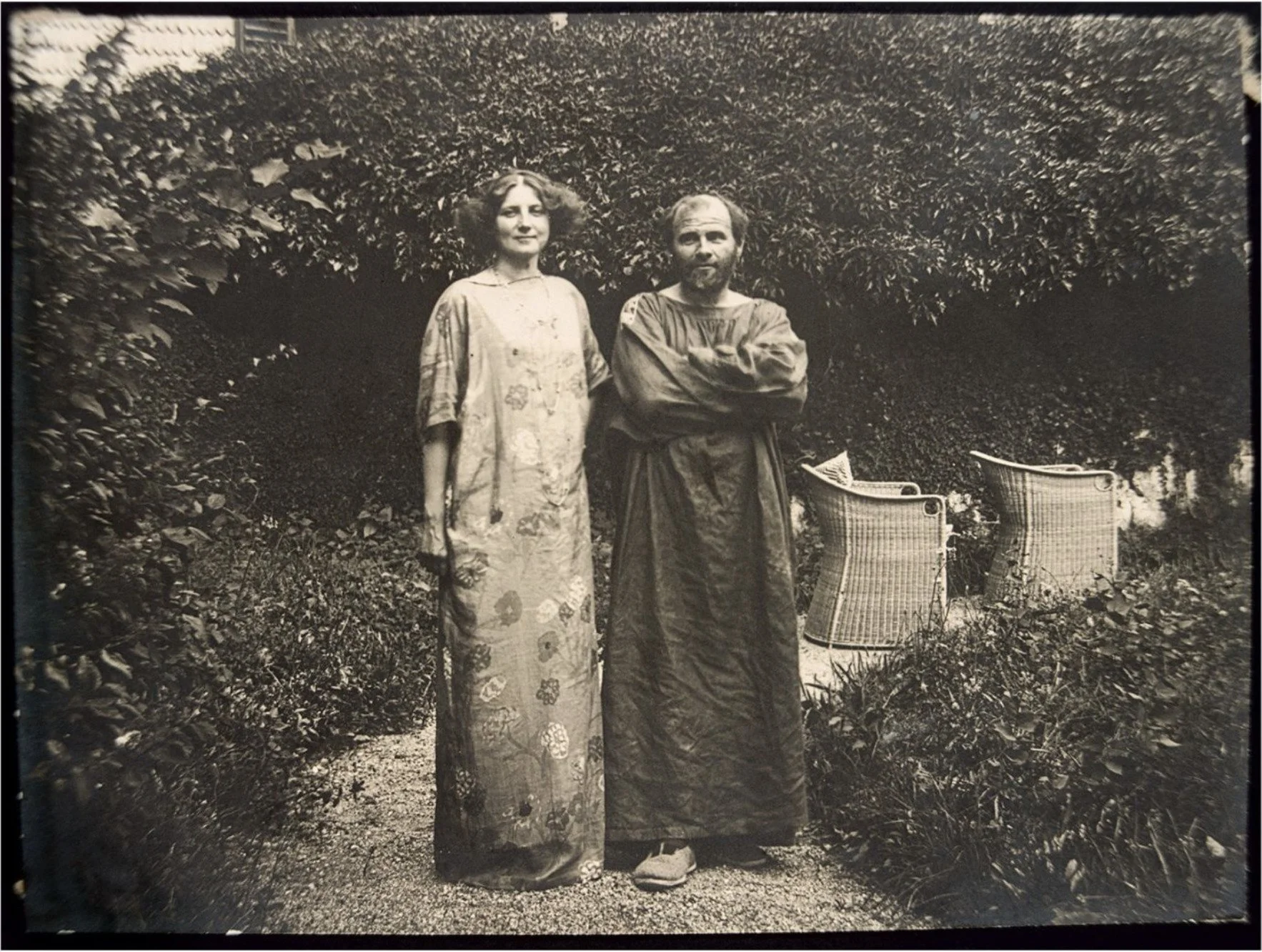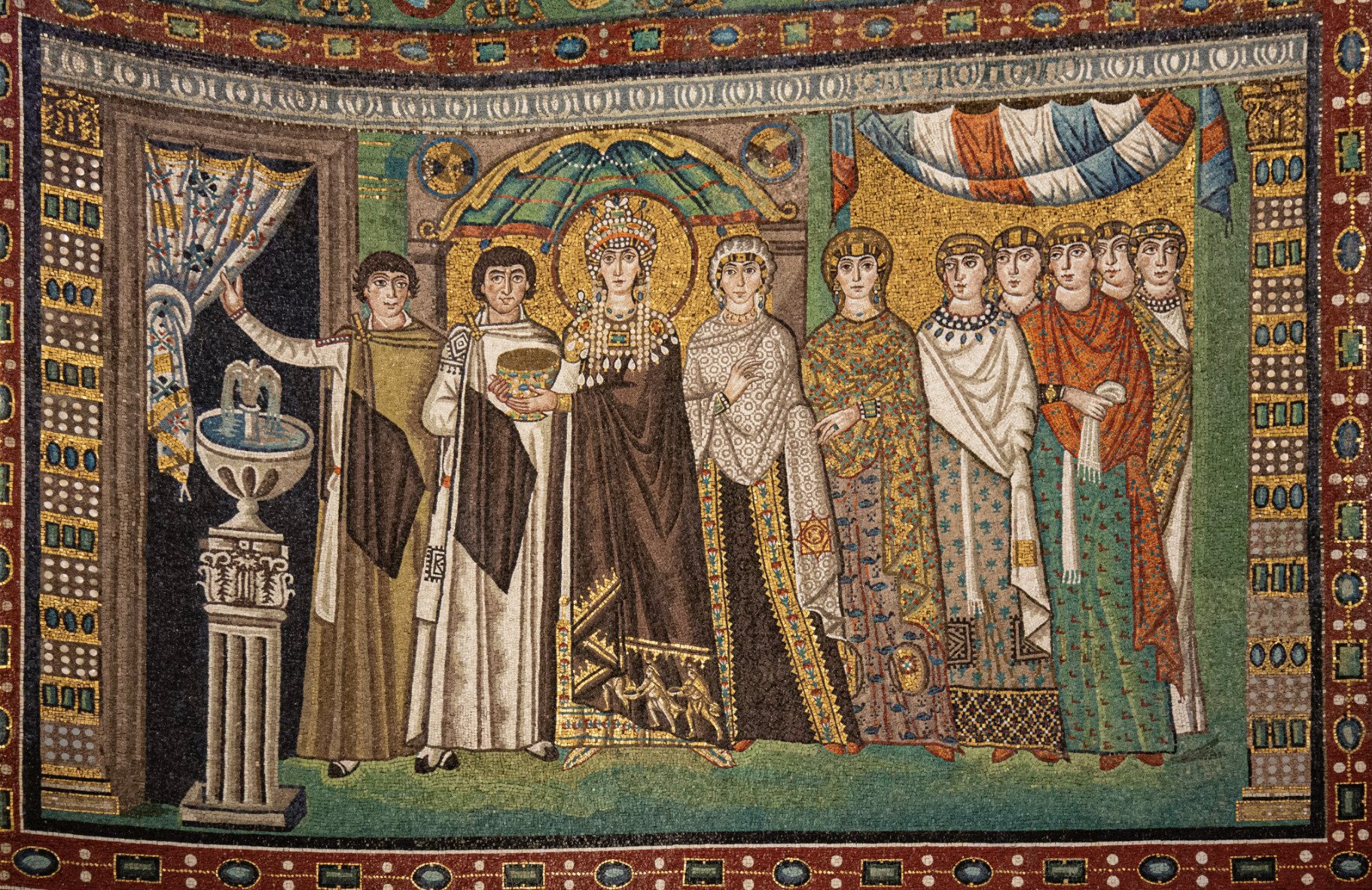Scorsese and Klimt: Deification and Detachment in Shutter Island and The Kiss
By Grace Liang
Film still from Martin Scorsese, Shutter Island, 2010.
Image courtesy of Evan E. Richards.
Martin Scorsese’s neo-noir psychological thriller Shutter Island (2010), adapted from Dennis Lehane’s 2003 novel of the same name, follows the tortured widower U.S. Marshal Edward “Teddy” Daniels (Leonardo DiCaprio) and his partner Chuck Aule (Mark Ruffalo) as they investigate the disappearance of a patient from the Ashecliffe Hospital for the Criminally Insane. Their search for Rachel Solando, a patient admitted for drowning her three children in the lake behind their house, brings Daniels closer to his true objective: finding and killing Andrew Laeddis, a former patient at Ashecliff and the arsonist who was responsible for his wife’s death. In one of the film’s haunting dream sequences, Scorsese places Daniels and his late wife Dolores (Michelle Williams) inside a tableau vivant of Gustav Klimt’s The Kiss (1907-8). The filmmaker’s inclusion of this shot imbues the relationship between Teddy and Dolores with the romantic and symbolic complexity of Klimt’s painting, while evoking the themes of longing and unfulfilled intimacy that connect Daniels’ psyche to Klimt’s iconic work.
Gustav Klimt, The Kiss, 1907-8, oil and gold leaf on canvas, 180 x 180 cm.
Image courtesy of the Österreichische Galerie Belvedere, Vienna.
Klimt’s The Kiss depicts two figures in a flowered meadow, wreathed in resplendent halos and illuminated by a heavenly golden light. It is widely viewed as a romantic masterpiece and a tribute to love itself. Yet, Klimt’s figures have a more ambiguous relationship that is often interpreted in relation to the artist's dynamic with his companion and muse, Emilie Flöge. The romance of The Kiss is undercut by the peril of the cliff behind them, and though the female figure’s expression is one of serenity, the curl of her fingers and toes, along with the turn of her face away from the male figure, betrays some discomfort at his advances. It is evident in The Kiss that there is immense care and affection between the two figures. They had a decades-long partnership and shared an intimate, but platonic, love. The Kiss indicates that Klimt’s feelings for Flöge extended into the realm of unfulfilled romantic desire, suggesting that he longed for her through their years of friendship and collaboration. Even in his golden ‘ode to love,’ Klimt acknowledges that the love he longed for remained just beyond his reach.
Emma Bacher, Gustav Klimt in his painter’s coat and Emilie Flöge in a reform dress in the garden of the Villa Oleander, 1910. Private collection.
Image courtesy of the Klimt Foundation, Vienna.
Dolores haunts her husband, Daniels, appearing in his dreams and waking hallucinations, but he welcomes these apparitions rather than recoiling from them. It seems that, if he could, he would exist only in the moments of these mirages. The perilous cliff suggested in The Kiss manifests in the film through the fragility of Dolores’ state of being. Despite her pleas for him to let her go, Daniels clutches her with an aching intensity, as if his embrace can keep her from falling off the precipice into non-existence. She turns away from him as she succumbs to the fire that consumed her once before. Even in his fantasies, Daniels only has a few precious moments before his wife crumbles to ash in his arms.
Theodora Mosaic, 540s. San Vitale, Ravenna.
Image courtesy of Smarthistory.
The ash falling around the two figures catches the yellow light in a way that mirrors Klimt’s technique of applying gold leaf over a gesso underpainting and following with a sheer wash of dark pigment over the top. This treatment of the canvas creates a luminous texture that catches the light, evoking the tesserae of Byzantine mosaics. The speckled gold background and patterned textiles of Klimt’s painting have a remarkably similar effect to those of the Theodora Mosaic (540s), which adorns the walls of the Church of San Vitale in Ravenna, Italy. Klimt’s use of gold also takes inspiration from early Christian iconography, creating a nearly religious representation of his love for Flöge. Scorsese’s tableau of The Kiss functions similarly; Klimt’s gilded reverence for his muse is echoed in Daniels’ sanctification of his wife, with the golden tenderness masking a deeper pain of loss. In the dream, Dolores even seems to possess divine knowledge. She tells her husband that Rachel Solando and Andrew Laeddis are both still on Shutter Island, and he takes her word as gospel. Yet, the perfectly virtuous saint and the infallible prophetess that Daniels worships only exist in his memory.
The significance of The Kiss deepens with the realisation that Edward Daniels and Rachel Solando are anagrams for Andrew Laeddis and Dolores Chanal. Dolores was the one who drowned her own children, and it was she who set their city apartment on fire, not Andrew Laeddis. Rachel Solando, Chuck Aule, and even Teddy Daniels himself all join Dolores in the pantheon of characters concocted by Laeddis’ broken mind. They all become part of the self-preservational mythology that Laeddis invented to protect himself from the crushing guilt of having ignored his wife’s deteriorating mental health. With this revelation, the female figure turning away from the male becomes Laeddis’ blind devotion to his wife without understanding every part of her. He holds her facing away from him, content in remaining ignorant of her imperfections. Even after it cost him his family and his sanity, Laeddis cannot break free of his propensity for idealization.
The film functions on three levels at any given point: the Teddy Daniels delusion, the hospital experiment, and the truth of Andrew Laeddis. As such, the symbolism of The Kiss weaves itself through the multi-layered fabric of the story. Scorsese’s carefully constructed tableau vivant serves not only as a visual homage but also infuses Laeddis’ own tortured psyche with the painting’s ambiguous blend of love, longing, and unease. Laeddis idealises Dolores to such a degree of extremity that he clings desperately to a version of reality where she remains just out of reach but eternally adored. Through The Kiss, Scorsese is able to explore the fragility of memory, the danger of wilful ignorance, and the tragedy of a love twisted by trauma into something both holy and horrifying, in a single shot.
Bibliography
“The Biography.” Gustav Klimt-Datenbank. Accessed September 29, 2025. https://www.klimt-database.com/en/the-biography/.
Farber, Allen. “San Vitale and the Justinian and Theodora Mosaics.” Smarthistory.org, August 20, 2022. https://smarthistory.org/san-vitale/.
McClanan, Anne. “Empress Theodora, Rhetoric, and Byzantine Primary Sources.” Smarthistory, July 8, 2021. https://smarthistory.org/theodora-rhetoric/.
Gustav Klimt. The Kiss. 1907-1908. Oil on canvas, 180 x 180 cm. Österreichische Galerie Belvedere, Vienna. Erich Lessing Culture and Fine Arts Archives. Artstor. https://jstor.org/stable/community.18137833.
“Modern Couples: Emilie Flöge & Gustav Klimt (1892–1918).” Barbican. Accessed September 29, 2025. https://www.barbican.org.uk/s/meetthecouples-klimtfloge/.
“Shutter Island (2010).” Evan E Richards. Accessed September 29, 2025. https://www.evanerichards.com/2011/2392/.




